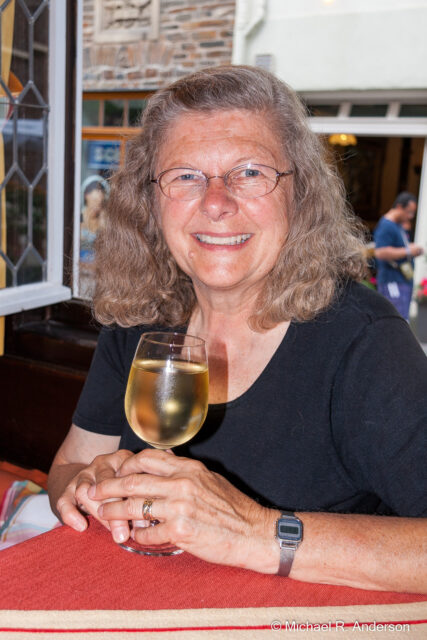(After a holiday hiatus, this post continues from Walls and Wine.)
Following a nice breakfast in Bacharach, we took a short train ride to St. Goar for a day trip. This is another quaint town with half-timbered buildings along the Rhine River. I didn’t think it was quite as interesting as Bacharach, but that didn’t matter because our goal was to visit Burg Rheinfels, a castle that sits above the town.
You can take a taxi or a tourist train to reach the castle, but we chose to follow a trail instead. An advantage of walking is that you get to enjoy the view of the town below, appreciate the steepness of the valley walls, and watch the abundant traffic on the Rhine River.
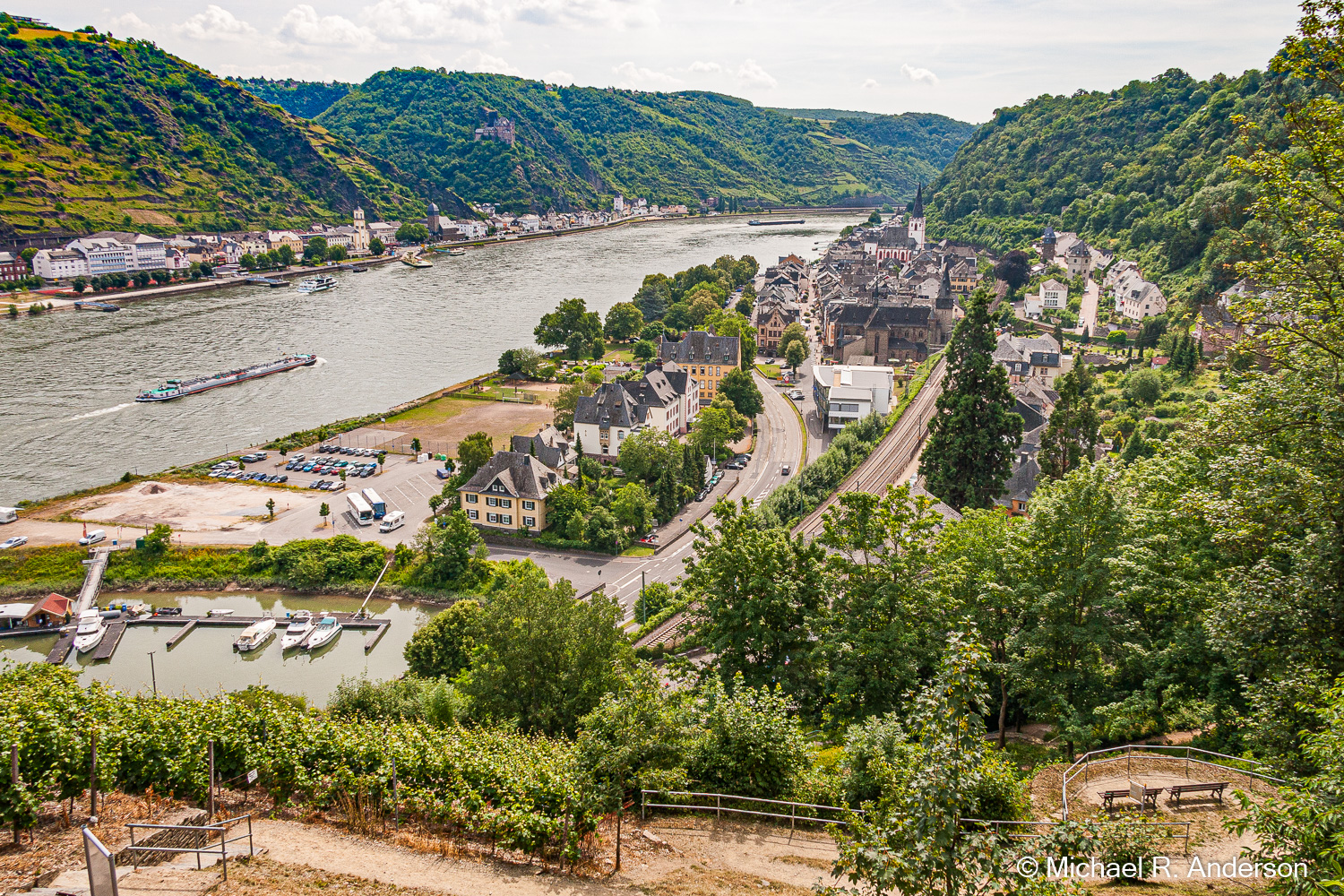
Burg Rheinfels was built in 1245. After several expansions it was the largest fortification on the Rhine and earned the nickname of “the unconquerable fortress.” It survived a lot of action during the 30-Years War and withstood many a siege, including one by 28,000 French soldiers in 1692. It was finally surrendered without a fight to the French in 1797 and subsequently destroyed. The picture below from 1607 shows its appearance in its prime.
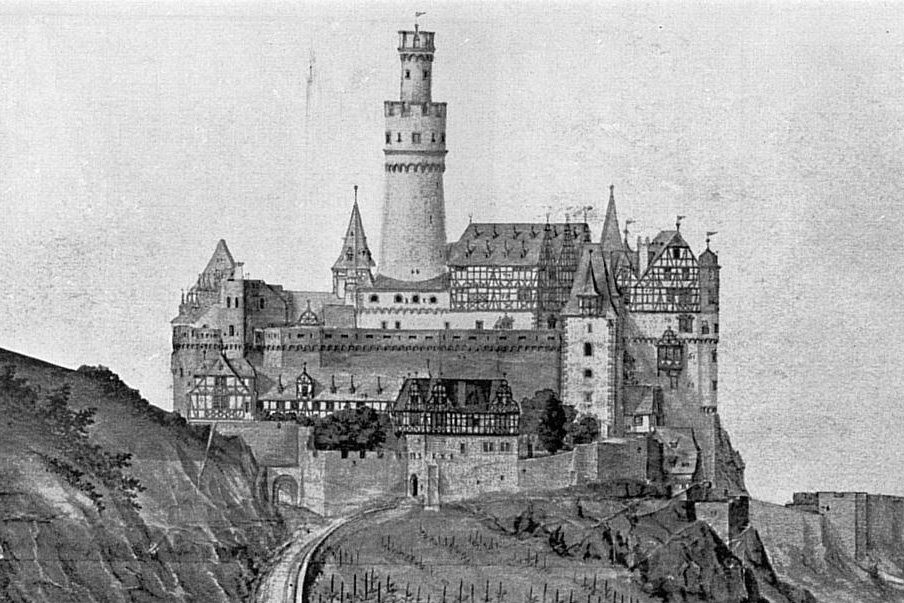
(https://en.wikipedia.org/wiki/Rheinfels_Castle)
After its destruction, materials from Burg Rheinfels were used by local people for building, so only part of the structure remains. At one time the castle covered five times as much land as it does now. Up to 600 people lived there during times of peace and as many as 4000 sought refuge during a siege. To be self-sufficient, Burg Rheinfels included gardens, a bakery, a brewery (of course), livestock and a pharmacy. Though it had dungeons, it had no dragons.
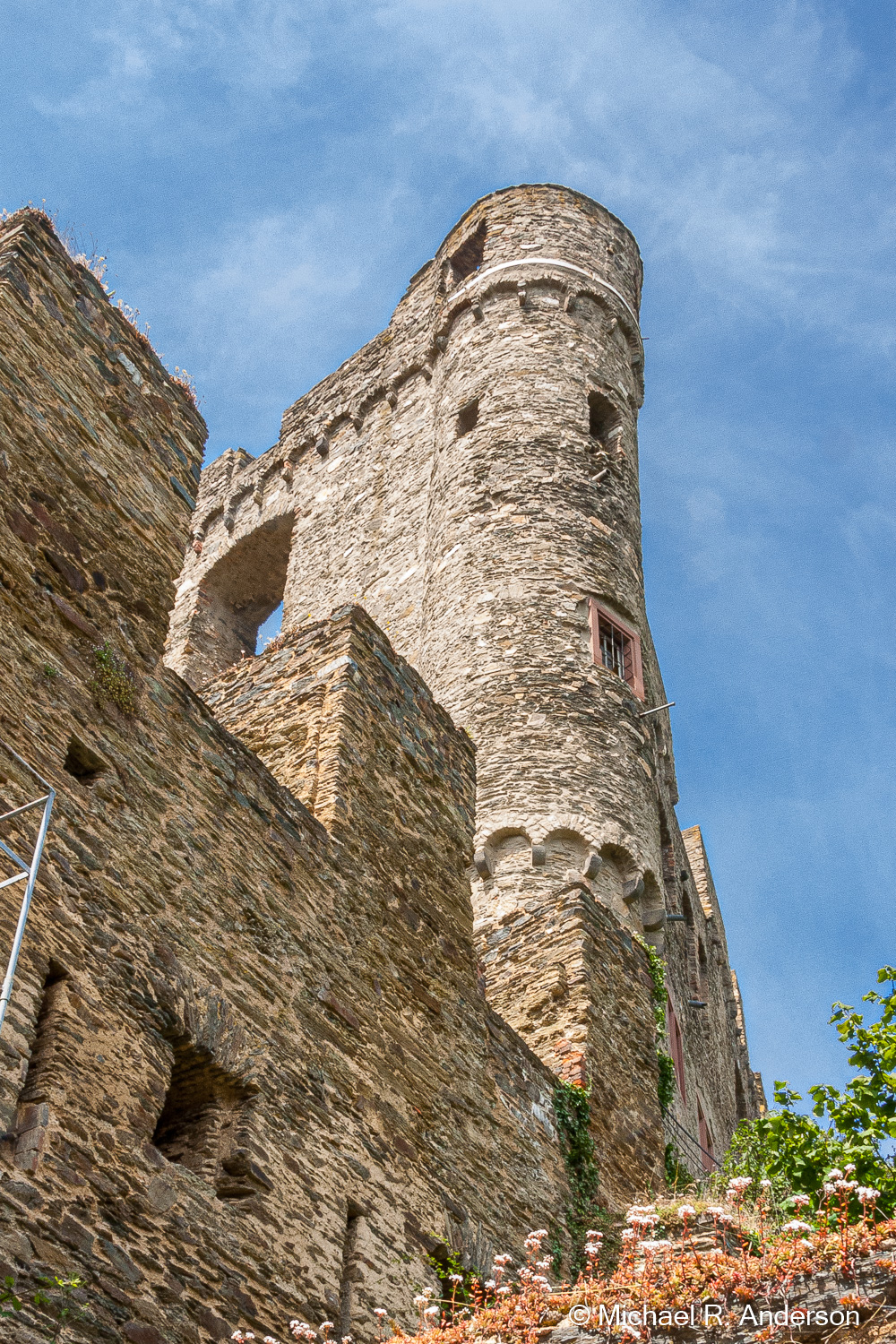
Due to the destruction, touring Burg Rheinfels is not like walking onto a set from “The Game of Thrones,” but it is still like walking back in time. That feeling is tempered somewhat by a modern hotel and restaurant constructed on one end of the castle. I won’t show any pictures of that so as not to ruin the medieval ambience of the ruins.
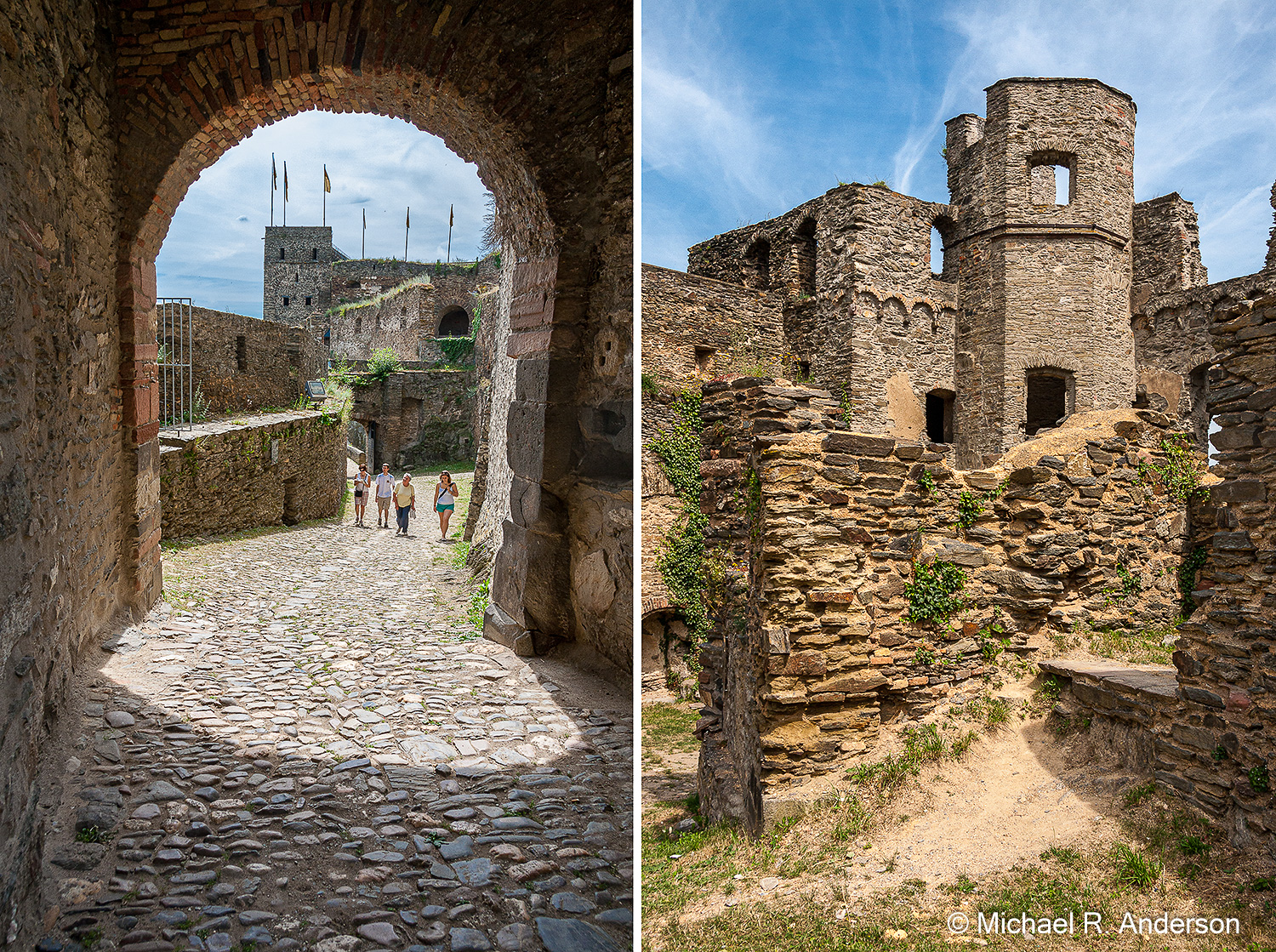
Wandering around the castle you can find dark narrow passages and winding stairways. A pile of spherical rocks, which appear to be cannon balls, were used in catapults. When a battle was over, they were collected and saved for the next altercation.
During one of its expansions, a cellar was constructed in an area where there had been a moat. You walk down a stairway to enter this very large room. Though it wasn’t open when we visited, a separate room holds a 180,000 liter (47,550 gallon) stone barrel used to store wine. When full it could last for up to 18 months. According to the guide books, part of a soldier’s pay was in wine.
(Click on any photo to enlarge, then use arrows to scroll through the images.)
From a vantage point high on the castle you can get a nice view of the Rhine River. The Rhine is one of the world’s most heavily traveled inland waterways and an average of about 1600 vessels make their way on the river daily. If you’re looking for castles, you can look in almost any direction and find them on this stretch of the river. From Burg Rheinfels you can look across the river and see two castles, Burg Katzenellenbogen (Katz Castle) and Burg Thurnberg. Due to it’s proximity to Burg “Katz” (Cat Castle), Burg Thurnberg is often called Burg “Maus” (Mouse Castle).
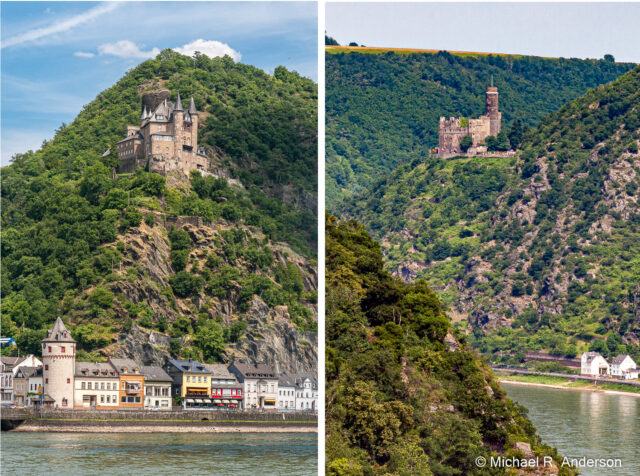
Burg Rheinfels and other castles on the Rhine acted as toll collectors. According to one reference, “[m]ost were built by a mafia of local robber barons – knights, princes and even bishops – who extorted tolls from merchant ships by blocking their passage with iron chains.” I suspect that, unlike the Tri-State Tollway where you hand a bored-looking person two dollars and they silently hand you back a dime, these were more like your-money-or-your-life toll booths.
After our tour of the castle and a short walk around town, we decided to head back to Bacharach. Since our Eurail passes were also accepted on KD Koln-Dusseldorfer River Cruises, we decided to return via the river rather than the rails. Much to no one’s surprise, we saw more castles along the way. One of them, Burg Pfalzgrafenstein, even sits right in the river. It was probably rather difficult to avoid paying their toll. As I mentioned in Walls and Wine, despite the steep rocky walls of the Rhine Valley, vineyards are plentiful here.
On the return trip, we passed a stretch of the river that is not associated with castles or wine, but with poetry. The poem is “Die Lorelei,” by Henrich Heine. It’s based on a German legend of an enchanting, seductive maiden who lures seamen to their death. She sits atop a mountain, her blond hair shining in the sunlight and sings her siren song. Mesmerized sailors on the Rhine River are distracted and crash into the rocks below.
So, did I learn that in a guide book? No, it probably surprises me as much as you, but I had to memorize and recite that poem in a high school German class. For some reason, after more than 50 years, I still remember the first four lines.
Ich weiss nicht, was soll es bedeuten,
Dass ich so traurig bin;
Ein Märchen aus alten Zeiten,
Das kommt mir nicht aus dem Sinn.
Fortunately for all of us, I do not remember the remaining twenty lines.
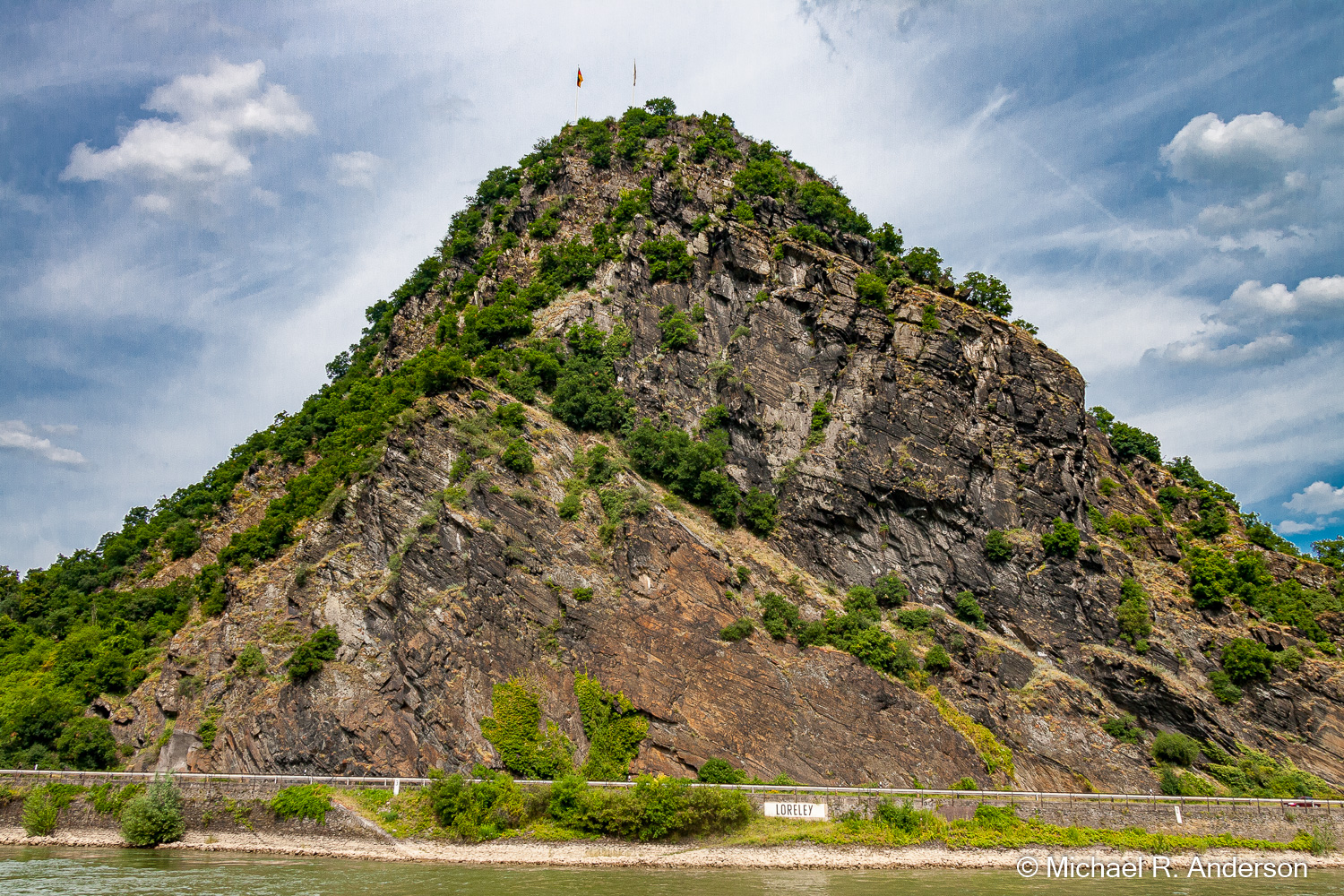
Upon returning to Bacharach we found a place to have dinner. While eating, it dawned on me that the blond-haired maiden was not on the mountain, she was dining with me.
